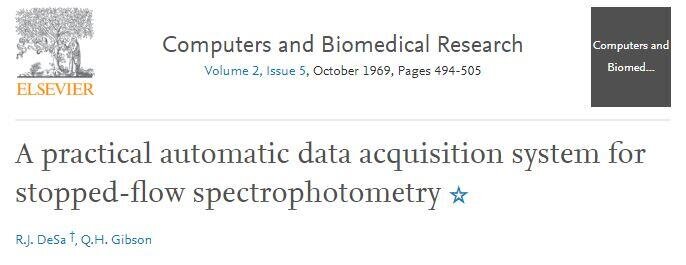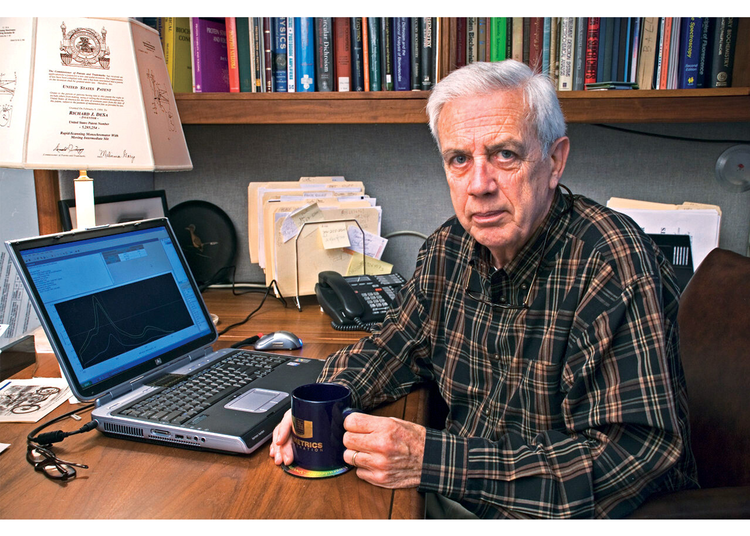The Ultimate Guide To Circular Dichroism
The Ultimate Guide To Circular Dichroism
Blog Article
The Ultimate Guide To Spectrophotometers
Table of ContentsUv/vis Things To Know Before You Get ThisThe Ultimate Guide To Uv/visOur Circularly Polarized Luminescence PDFsUv/vis Fundamentals ExplainedSome Ideas on Circularly Polarized Luminescence You Should Know

Although spectrophotometry is most commonly applied to ultraviolet, noticeable, and infrared radiation, contemporary spectrophotometers can question broad swaths of the electro-magnetic spectrum, consisting of x-ray, ultraviolet, noticeable, infrared, and/or microwave wavelengths. Spectrophotometry is a tool that hinges on the quantitative analysis of particles depending on how much light is absorbed by colored substances.
The Uv/vis/nir PDFs
A spectrophotometer is commonly used for the measurement of transmittance or reflectance of options, transparent or opaque solids, such as polished glass, or gases. Numerous biochemicals are colored, as in, they soak up visible light and therefore can be determined by colorimetric procedures, even colorless biochemicals can typically be converted to colored compounds appropriate for chromogenic color-forming reactions to yield compounds ideal for colorimetric analysis.: 65 However, they can likewise be designed to measure the diffusivity on any of the listed light varieties that generally cover around 2002500 nm using different controls and calibrations.
An example of an experiment in which spectrophotometry is utilized is the determination of the stability constant of a solution. A certain chemical reaction within a solution may take place in a forward and reverse direction, where reactants form products and products break down into reactants. At some point, this chemical response will reach a point of balance called an equilibrium point.
Uv/vis - The Facts
The amount of light that goes through the service is a sign of the concentration of particular chemicals that do not permit light to go through. The absorption of light is because of the interaction of light with the electronic and vibrational modes of molecules. Each type of molecule has a private set of energy levels associated with the makeup of its chemical bonds and nuclei and thus will absorb light of specific wavelengths, or energies, leading to special spectral homes.
They are commonly utilized in lots of markets including Full Article semiconductors, laser and optical production, printing and forensic evaluation, as well as in laboratories for the research study of chemical substances. Spectrophotometry is frequently utilized in measurements of enzyme activities, determinations of protein concentrations, determinations of enzymatic kinetic constants, and measurements of ligand binding reactions.: 65 Ultimately, a spectrophotometer is able to identify, depending on the control or calibration, what substances are present in a target and precisely how much through estimations of observed wavelengths.
This would come as a solution to the previously created spectrophotometers which were unable to soak up the ultraviolet correctly.
Examine This Report about Circular Dichroism
It would be found that this did not give acceptable results, therefore in Design B, there was a shift from a glass to a quartz prism which permitted much better absorbance outcomes - circular dichroism (https://www.cybo.com/US-biz/on-line-instrument-systems-olis-inc). From there, Design C was born with a modification to the wavelength resolution which wound up having three units of it produced
It irradiates the sample with polychromatic light which the sample absorbs depending on its residential or commercial properties. Then it is sent back by grating the photodiode range which identifies the wavelength region of the spectrum. Ever since, the production and execution of spectrophotometry devices has actually increased tremendously and has actually become one of the most innovative instruments of our time.

A Biased View of Uv/vis
Historically, spectrophotometers utilize a monochromator consisting of a diffraction grating to produce the analytical spectrum. The grating can either be movable or repaired. If a single detector, such as a photomultiplier tube or photodiode is used, the grating can be scanned step-by-step (scanning spectrophotometer) so that the detector can measure the light strength at each wavelength (which will represent each "step").
In such systems, the grating is repaired and the strength of each wavelength of light is measured by a different detector in the selection. When making transmission measurements, the spectrophotometer quantitatively compares the fraction of light that passes through a reference solution and a test option, then electronically compares the strengths of the two signals and calculates the percentage of transmission of the sample compared to the recommendation standard.

Report this page